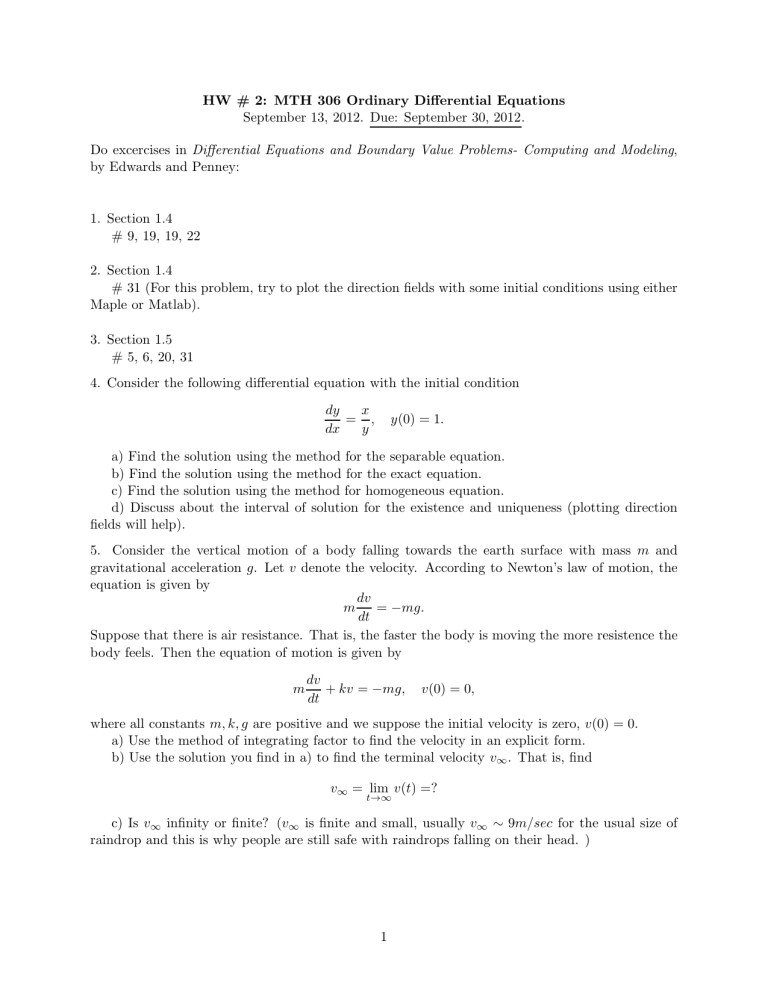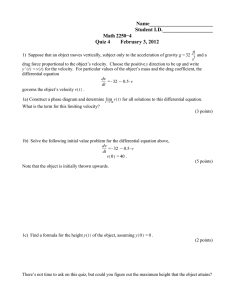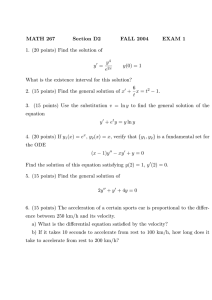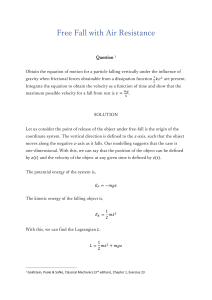
HW # 2: MTH 306 Ordinary Differential Equations September 13, 2012. Due: September 30, 2012. Do excercises in Differential Equations and Boundary Value Problems- Computing and Modeling, by Edwards and Penney: 1. Section 1.4 # 9, 19, 19, 22 2. Section 1.4 # 31 (For this problem, try to plot the direction fields with some initial conditions using either Maple or Matlab). 3. Section 1.5 # 5, 6, 20, 31 4. Consider the following differential equation with the initial condition x dy = , dx y y(0) = 1. a) Find the solution using the method for the separable equation. b) Find the solution using the method for the exact equation. c) Find the solution using the method for homogeneous equation. d) Discuss about the interval of solution for the existence and uniqueness (plotting direction fields will help). 5. Consider the vertical motion of a body falling towards the earth surface with mass m and gravitational acceleration g. Let v denote the velocity. According to Newton’s law of motion, the equation is given by dv = −mg. m dt Suppose that there is air resistance. That is, the faster the body is moving the more resistence the body feels. Then the equation of motion is given by m dv + kv = −mg, dt v(0) = 0, where all constants m, k, g are positive and we suppose the initial velocity is zero, v(0) = 0. a) Use the method of integrating factor to find the velocity in an explicit form. b) Use the solution you find in a) to find the terminal velocity v∞ . That is, find v∞ = lim v(t) =? t→∞ c) Is v∞ infinity or finite? (v∞ is finite and small, usually v∞ ∼ 9m/sec for the usual size of raindrop and this is why people are still safe with raindrops falling on their head. ) 1






